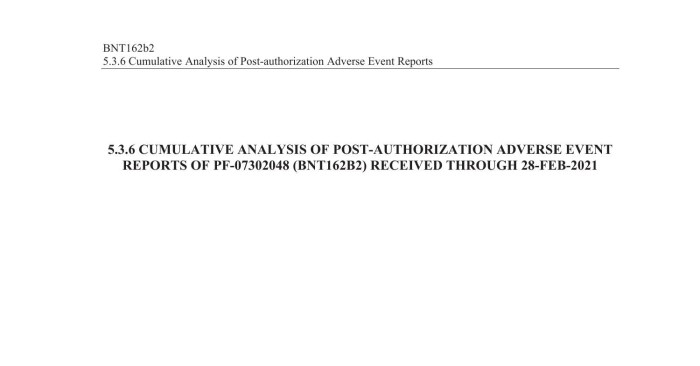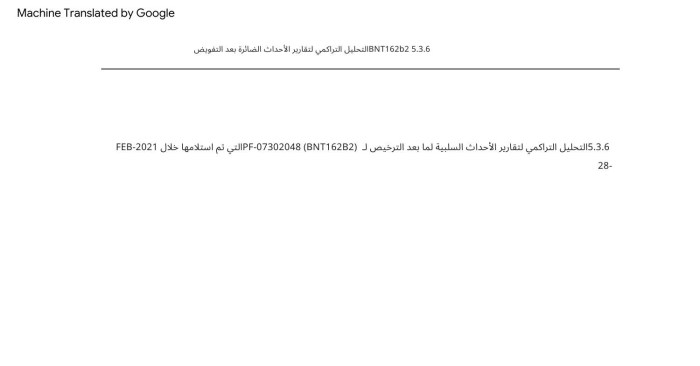Which section of the package insert contains the postmarketing experience – The postmarketing experience section of a package insert plays a crucial role in evaluating drug safety and effectiveness. This section provides valuable information gathered after a drug has been approved for marketing and is widely used by healthcare professionals and patients.
This Artikel explores the purpose, regulatory requirements, and types of information typically found in the postmarketing experience section. It also discusses the importance of postmarketing experience for identifying adverse events, new uses for drugs, and ongoing monitoring of drug safety.
Postmarketing Experience in Package Insert

The postmarketing experience section of a package insert provides information on the safety and effectiveness of a drug after it has been approved for marketing. This information is collected from a variety of sources, including clinical trials, observational studies, and spontaneous adverse event reports.
The regulatory requirements for including postmarketing experience information in a package insert vary from country to country. In the United States, the Food and Drug Administration (FDA) requires that all package inserts include a section on postmarketing experience.
The postmarketing experience section typically includes the following types of information:
- A summary of the clinical trials that were conducted to evaluate the safety and effectiveness of the drug.
- A discussion of the adverse events that have been reported during postmarketing use of the drug.
- A discussion of the effectiveness of the drug in treating the approved indications.
- A discussion of any new uses for the drug that have been identified during postmarketing use.
Importance of Postmarketing Experience

Postmarketing experience is an important source of information about the safety and effectiveness of drugs. This information can help to identify adverse events that were not seen in clinical trials, and it can also help to identify new uses for drugs.
Postmarketing experience has played a role in identifying a number of serious adverse events, including:
- The association between the drug Vioxx and an increased risk of heart attack and stroke.
- The association between the drug Baycol and an increased risk of rhabdomyolysis.
- The association between the drug Avandia and an increased risk of heart failure.
Postmarketing experience has also helped to identify new uses for drugs, such as:
- The use of the drug sildenafil (Viagra) to treat erectile dysfunction.
- The use of the drug tamoxifen (Nolvadex) to prevent breast cancer in women at high risk.
- The use of the drug metformin (Glucophage) to treat type 2 diabetes.
Sources of Postmarketing Experience Data

There are a number of different sources of postmarketing experience data, including:
- Clinical trials
- Observational studies
- Spontaneous adverse event reports
Clinical trials are conducted to evaluate the safety and effectiveness of drugs before they are approved for marketing. Observational studies are conducted to collect data on the safety and effectiveness of drugs after they have been approved for marketing. Spontaneous adverse event reports are reports of adverse events that are submitted to regulatory agencies by healthcare professionals and patients.
Each of these data sources has its own strengths and limitations. Clinical trials are the most rigorous type of study, but they can only be conducted on a small number of patients. Observational studies are less rigorous than clinical trials, but they can be conducted on a larger number of patients.
Spontaneous adverse event reports are the least rigorous type of study, but they can provide valuable information about the safety of drugs.
Analyzing Postmarketing Experience Data
The analysis of postmarketing experience data is a complex process. The first step is to identify the data sources that are most relevant to the question being asked. Once the data sources have been identified, the data must be cleaned and analyzed.
The data can be analyzed using a variety of statistical techniques, including:
- Descriptive statistics
- Inferential statistics
- Bayesian statistics
The choice of statistical technique depends on the type of data being analyzed and the question being asked.
Communicating Postmarketing Experience Findings

The findings of postmarketing experience studies should be communicated to healthcare professionals and patients in a clear and concise manner. The communication should include a discussion of the study design, the results of the study, and the implications of the study findings.
The communication should also be tailored to the audience’s needs and understanding.
There are a number of different ways to communicate postmarketing experience findings. These methods include:
- Package inserts
- Dear healthcare professional letters
- Press releases
- Scientific conferences
- Peer-reviewed journals
The choice of communication method depends on the target audience and the importance of the findings.
FAQ: Which Section Of The Package Insert Contains The Postmarketing Experience
What is the purpose of the postmarketing experience section in a package insert?
The postmarketing experience section provides information about the safety and effectiveness of a drug after it has been approved for marketing and is widely used in clinical practice.
What types of information are typically found in the postmarketing experience section?
The postmarketing experience section may include information on adverse events, new uses for the drug, drug interactions, and other safety concerns identified after the drug has been approved for marketing.
How is the information in the postmarketing experience section gathered?
Information for the postmarketing experience section is gathered from various sources, including clinical trials, observational studies, spontaneous adverse event reports, and other surveillance systems.